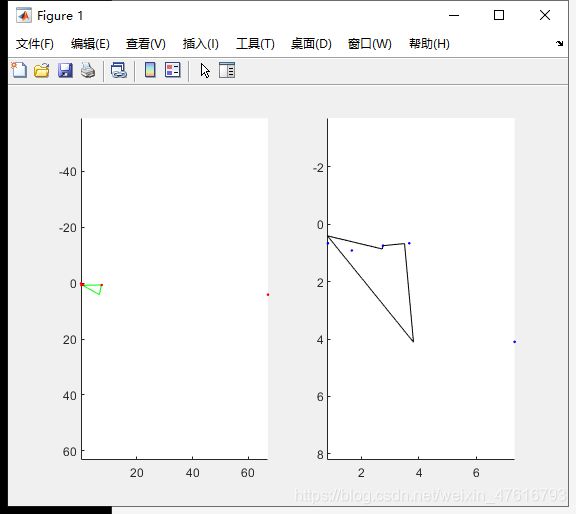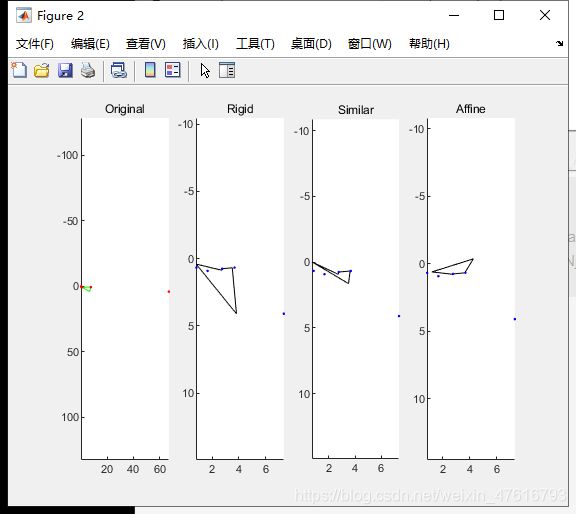moving least square移动最小二乘法MLS算法的matlab官方程序演示
clear all;
% Collecting the points:
% Requiring the pivots:
v = [11,20,22,1,1;11,12.3,2,3,4;12,3,3,4,6];
p = [1,201,22.5,1,5;1,12.3,2,3,4;12,3,3,4,6];
q = [20,22,11,11,5;11,12.3,2,3,4;12,3,3,4,6];
% Precomputation of the mlsd:
mlsd = MLSD2DpointsPrecompute(p,v);
% Obtaining the transformed points:
fv = MLSD2DTransform(mlsd,q);
% Plotting:
figure;
subplot(121); axis equal ij; hold on;
plotshape(v,true,‘g-’); plotpoints(p,‘r.’);
subplot(122); axis equal ij; hold on;
plotshape(fv,true,‘k-’); plotpoints(q,‘b.’);
% Other transformations:
fv_rigid = fv;
% Transforming the same points using a similarity:
mlsd = MLSD2DpointsPrecompute(p,v,‘similar’);
fv_similar = MLSD2DTransform(mlsd,q);
% Transforming the same points using an affinity:
mlsd = MLSD2DpointsPrecompute(p,v,‘affine’);
fv_affine = MLSD2DTransform(mlsd,q);
% Plotting:
figure;
subplot(141); axis equal ij; hold on;
plotshape(v,true,‘g-’); plotpoints(p,‘r.’);
title(‘Original’);
subplot(142); axis equal ij; hold on;
plotshape(fv_rigid,true,‘k-’); plotpoints(q,‘b.’);
title(‘Rigid’);
subplot(143); axis equal ij; hold on;
plotshape(fv_similar,true,‘k-’); plotpoints(q,‘b.’);
title(‘Similar’);
subplot(144); axis equal ij; hold on;
plotshape(fv_affine,true,‘k-’); plotpoints(q,‘b.’);
title(‘Affine’);

